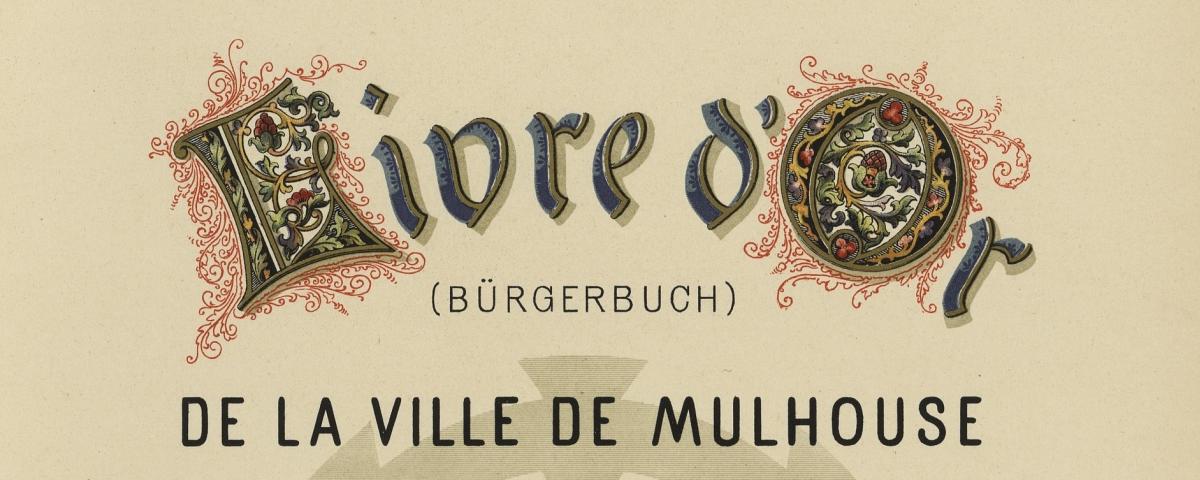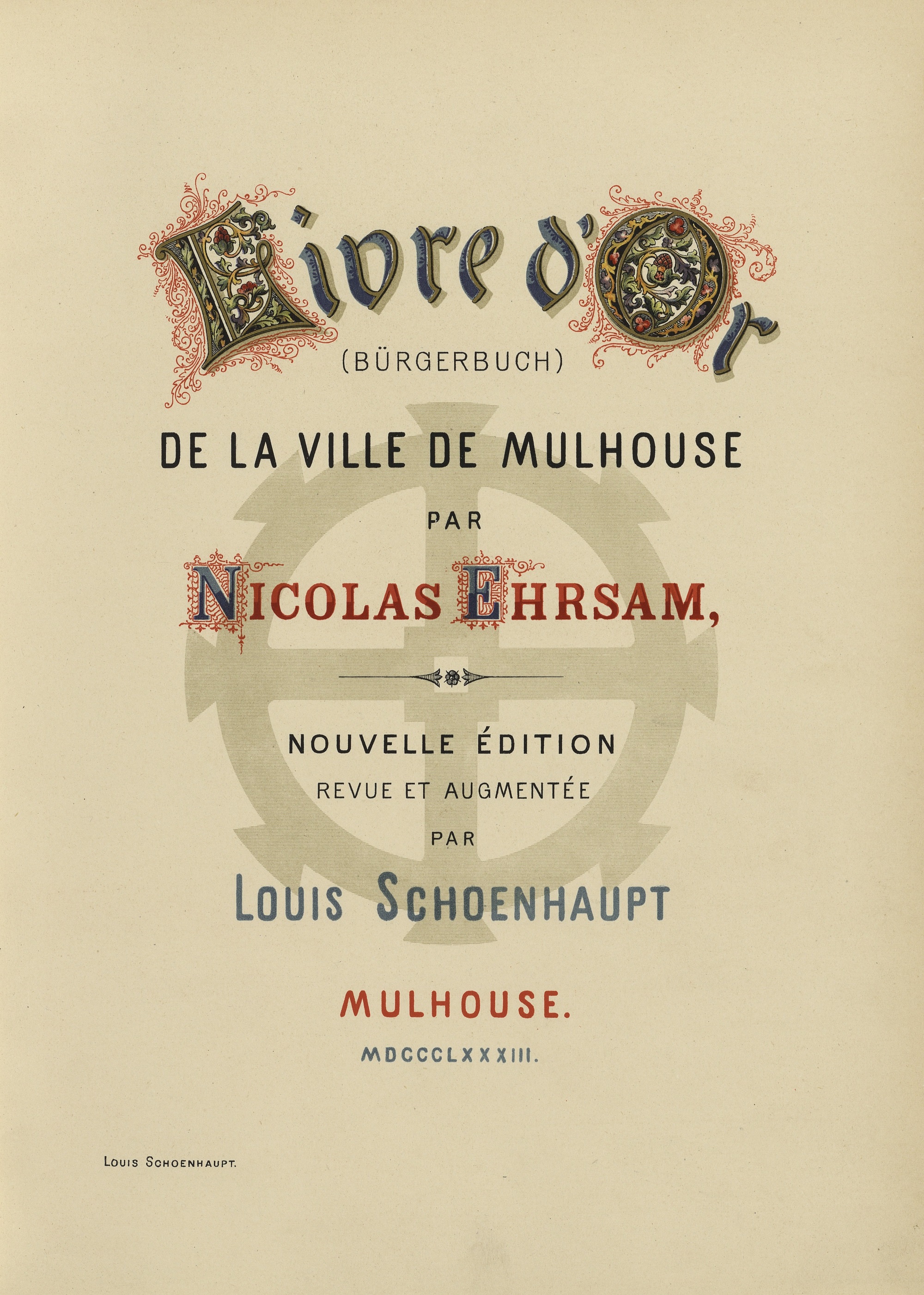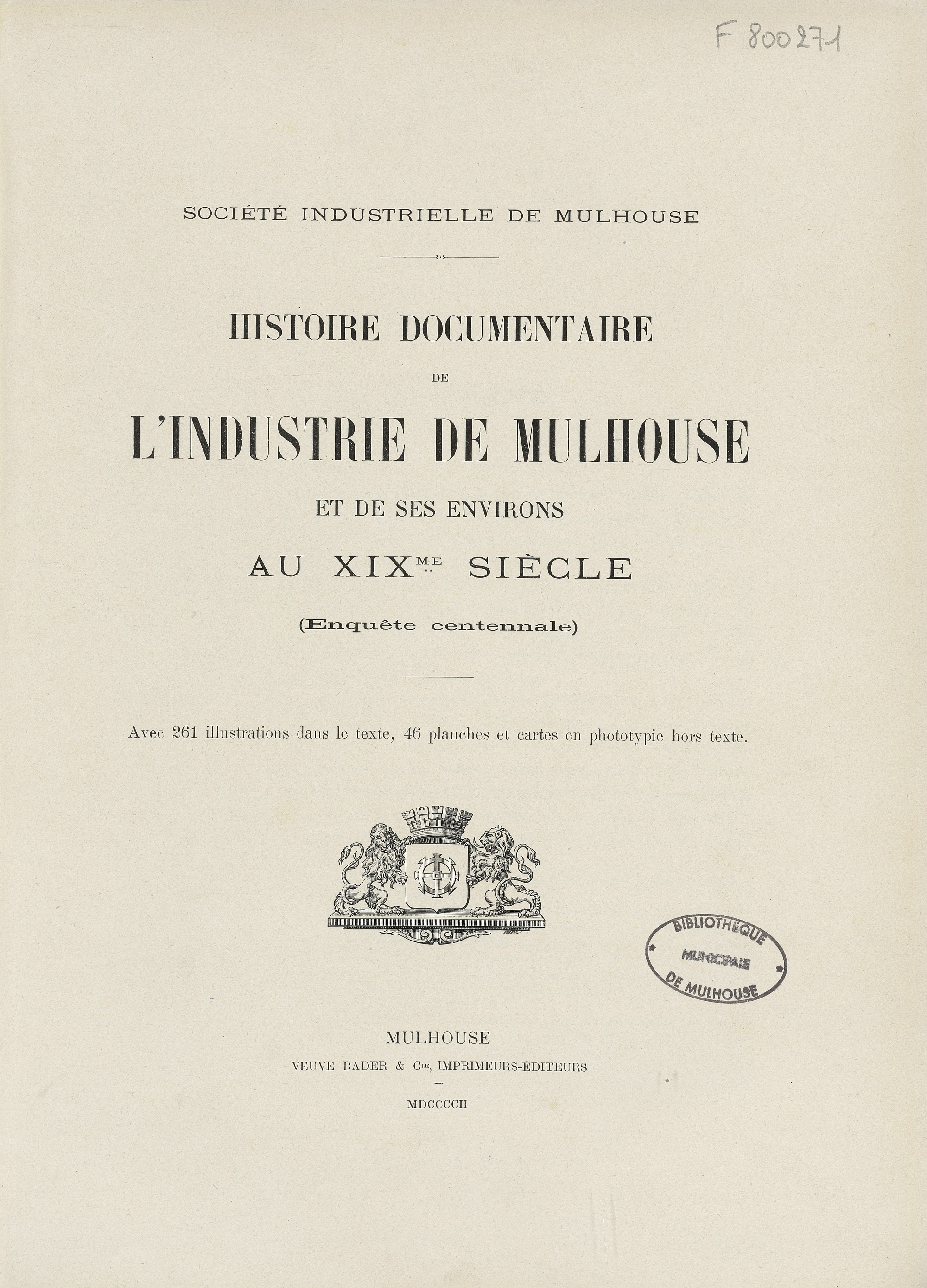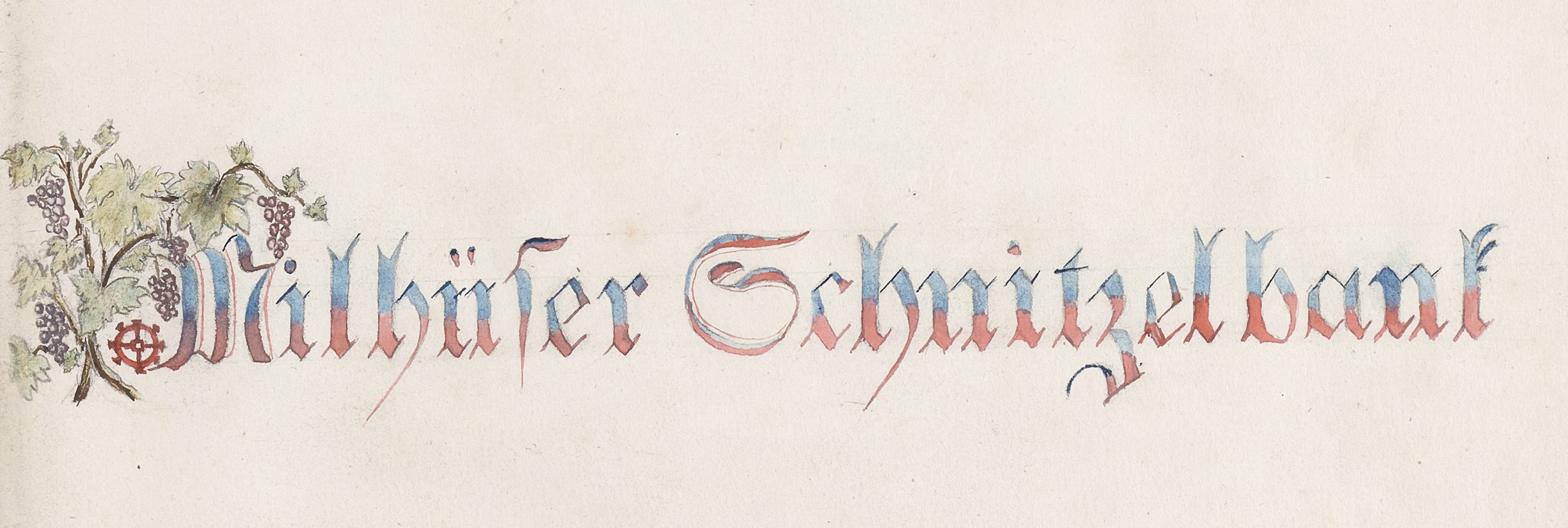
Most of the documents in this collection could be considerer 19th-century "Mulhouse essentials": Le Livre d’or de Mulhouse (1883), for example, by Nicolas Ehrsam, Louis Schoenhaupt &Ernest Lehr, is a colourful collection of coats of arms and lineages of the great Mulhouse families. Ernest Meininger (1852-1925) is also the author of many of the books in this corpus: the Histoire de Mulhouse (1923), the Guide de Mulhouse both in French (1919) and German (1893), the Chronique de la famille Engelmann de Mulhouse (1450-1898) (1914), and last but not least L'Hôtel de ville de Mulhouse (1892).



